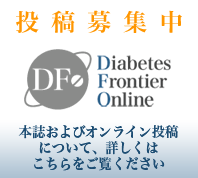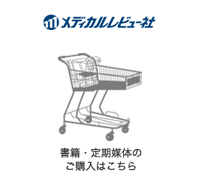2型糖尿病患者における食後のグルカゴン分泌動態
Postprandial dynamics of glucagon secretion in type 2 diabetes
- 東京慈恵会医科大学附属第三病院 糖尿病・代謝・内分泌内科
- Division of Diabetes, Metabolism and Endocrinology, Department of Internal Medicine, The Jikei University Daisan Hospital, Tokyo, Japan
執筆者連絡先
Author Contact
森 豊
〒201-8601 東京都狛江市和泉本町4-11-1
東京慈恵会医科大学附属第三病院 糖尿病・代謝・内分泌内科
moriyutakajp@yahoo.co.jp
Mori Yutaka
Division of Diabetes, Metabolism and Endocrinology, Department of Internal Medicine, The Jikei University Daisan Hospital, 4-11-1 Izumihoncho, Komae-shi, Tokyo, 201-8601, Japan
moriyutakajp@yahoo.co.jp
Diabetes Frontier Online 8, e1-003, 2021 http://doi.org/10.15634/J0100_0801_003
- 受付日
- 2021-9-10
- 受理日
- 2021-10-04
- 掲載日
- 2021-10-21
Diabetes Frontier Online 8, e1-003, 2021 http://doi.org/10.15634/J0100_0801_003
- Reception Date
- 2021-9-10
- Accept Date
- 2021-10-04
- Run Date
- 2021-10-21
要約
Abstract
2型糖尿病患者(T2DM)の食後のグルカゴン分泌動態を検討した。血糖コントロール目的で入院し,入院時点でインスリン,インクレチン関連薬(I),SGLT2阻害薬(S)が投与されていない糖尿病患者83名と耐糖能正常者(NGT)5名を対象に入院翌日の早朝空腹時に食事負荷試験(MTT)を行った。83名のうち5名は,入院時検査でGAD抗体陽性であったため1型糖尿病(T1DM)と診断した。食前,食後30分,60分,120分に採血し,血糖値(PG),Cペプチド値(SCPR,CLEIA法),グルカゴン値(Glc,サンドイッチELISA法)を測定した。MTTのすべての測定ポイントにおけるPGと血糖曲線下面積(area under the curve of PG:AUCPG)は,NGT<T2DM<T1DMの順に高値であり3群間に有意差(p<0.001)を認め,逆にAUCSCPRはNGT>T2DM>T1DMの順で低値であり3群間に有意差(p<0.001)を認めた。AUCGlcはNGT<T2DM<T1DMの順で高値であったが有意差はなかった(p=0.193)。T2DM78名のAUCGlcは,BMI,UCPR,AUCSCPRとの間に有意な相関関係を認めた(r=0.388,p=0.001;r=0.298,p=0.008;r=0.472,p<0.001)。T2DM78名のBMIを中央値(24.2 kg/m2)で2群に分けた比較では,AUCPGは両群間で有意差を認めなかったが,BMI≧24.2群のAUCSCPR,AUCGlcはBMI<24.2群と比較して有意に高値であった(p=0.004,p=0.001)。さらに,78名の2型糖尿病患者のうち入院後I,Sを投与せずに血糖コントロールが改善した10名の退院時MTTにおけるAUCPGは入院時と比較して有意に低下し,AUCSCPR値は有意に上昇,AUCGlc値は有意に低下した。
血糖コントロール不良なT2DMで観察されたグルカゴン過剰分泌には,高血糖状態により増悪したインスリン分泌不全やインスリン抵抗性が,α細胞でのインスリン作用不足を介して密接に関係しているものと推察された。
Type 2 diabetic patients were examined for their postprandial dynamics of glucagon secretion. A total of 83 diabetic patients admitted for glycemic control who were not receiving insulin, incretin-related drugs (I) or SGLT2 inhibitors (S) at admission and 5 normal glucose tolerance (NGT) cases were subjected to meal tolerance tests (MTTs) during early morning fasting hours at admission. Type 1 diabetic patients were diagnosed with auto-antibody against GAD at admission (n=5). Blood samples were drawn from these patients preprandially, and 30, 60, and 120 minutes postprandially to measure their glucose (PG), C-peptide (SCPR) and glucagon (Glc, Mercodia) values. The AUCSCPR values were shown to be the lowest in type 1 diabetic patients, followed by type 2 diabetic patients and NGT subjects, whereas AUCPG values and AUCGlc values were shown to be the highest in type 1 diabetic patients, followed by type 2 diabetic patients and NGT subjects. AUCGlc values in 78 type 2 diabetic patients were significantly correlated with BMI, urinary CPR, and AUCSCPR. Of the type 2 diabetic patients, although there was no significant different in AUCPG values between patients with BMI ≥ 24.2 kg/m2 (n=39) and with BMI < 24.2 kg/m2 (n=39), patients with BMI ≥ 24.2 kg/m2 had significantly larger AUCSCPR and AUCGlc values than those with BMI < 24.2 kg/m2. MTTs performed after improving glycemic control showed significantly smaller AUCPG, significantly elevated AUCSCPR, and significantly smaller AUCGlc values in those whose glycemic control was improved with neither I nor S treatments after admission.
The present findings suggest that over-secretion of glucagon in poorly controlled type 2 diabetes patients may be associated with hyperglycemia-related exacerbation of the existing insulin deficiency or insulin resistance through insulin action deficiency to α cell.
キーワード
- グルカゴン
- Cペプチド
- 2型糖尿病
- 1型糖尿病
- 肥満




